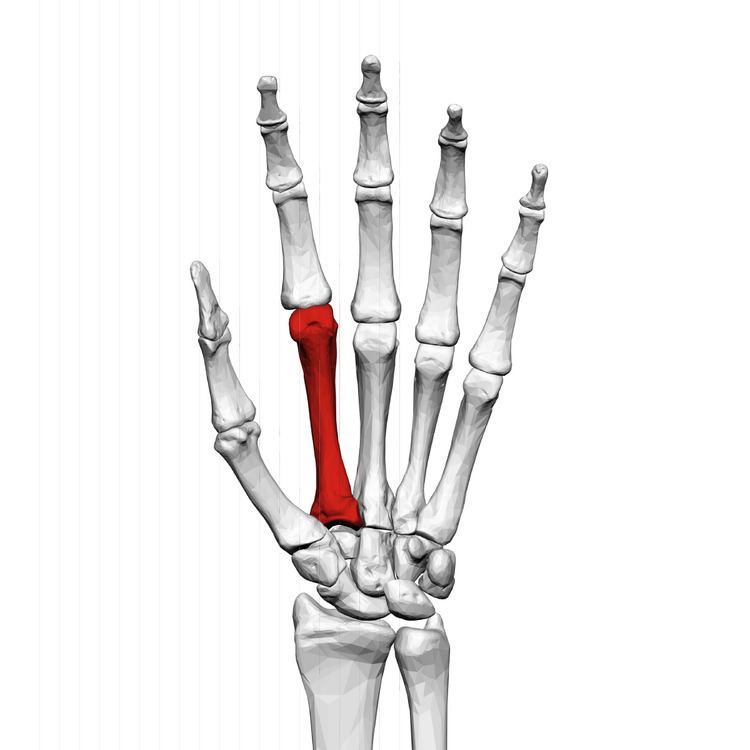Latin os metacarpale II | FMA 23900 | |
 | ||
MeSH A02.835.232.087.319.550 | ||
The second metacarpal bone (metacarpal bone of the index finger) is the longest, and its base the largest, of all the metacarpal bones.
Contents
Human anatomy
Its base is prolonged upward and medialward, forming a prominent ridge.
It presents four articular facets, three on the upper surface and one on the ulnar side:
The extensor carpi radialis longus muscle is inserted on the dorsal surface and the flexor carpi radialis muscle on the volar surface of the base.
This bone is often the most prone to damage from fast bowlers in cricket, as it is furthest down the bat handle on both left- and right-handers, and as such is in danger of being struck by balls that are pitched short.
Evolution
The articulation between the second metacarpal and the capitate is considered uniquely specialized in hominids. On the second metacarpal, the facet for the capitate is directed proximally, almost perpendicular to the facet for the third metacarpal, while the corresponding facet on the capitate is oriented distally. This is to receive compressive forces generated by the pad-to-pad opposition between the thumb and the index finger. In contrast, in apes, including fossil apes such as Dryopithecus and Proconsul, these facets are oriented in a sagittal plane. In quadrupedal monkeys these facets are oriented slightly differently due to their locomotor behaviour.
In Oreopithecus, a Miocene hominid that became extinct 7 million years ago, the orientation of the facet on the second metacarpal is similar to human conditions — an indication that it had the capability of pad-to-pad precision grip. Oreopithecus also lacks the waisted capitate associated with apes and climbing still present in Australopithecus.
Ossification
The metacarpal bone of the index finger has two centres of ossification: a primary centre in the shaft and a secondary centre in the head. This contrasts to the first metacarpal bone where the secondary centre is found in the base. The ossification process begins in the shaft during prenatal life, and in the head between 11th and 22nd months.
